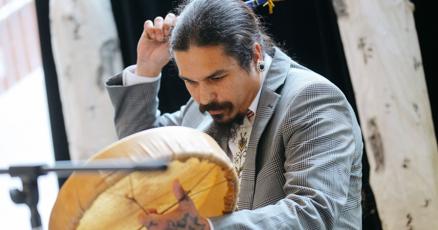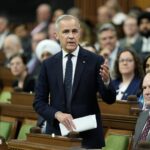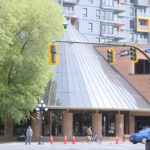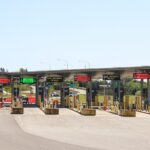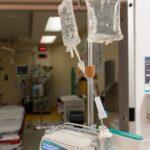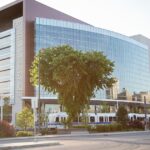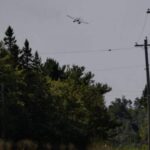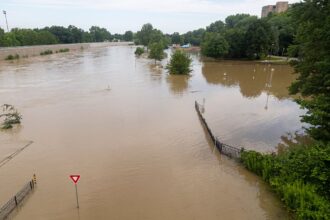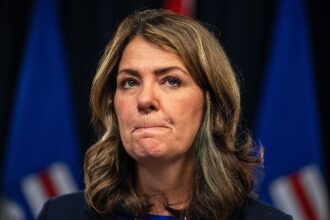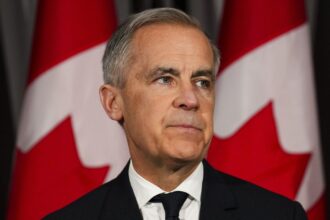In the heart of Toronto’s east end, a revolutionary health facility has opened its doors, promising to transform healthcare delivery for Indigenous communities. The Toronto Indigenous Health Centre, which celebrated its grand opening this week, represents more than just a new medical facility—it embodies decades of advocacy, resilience, and a commitment to culturally appropriate care that honors traditional healing practices alongside modern medicine.
“This centre is the culmination of 20 years of dreams and determination,” said Steve Teekens, executive director of Na-Me-Res (Native Men’s Residence), during the emotional opening ceremony. “For too long, our people have faced barriers in accessing healthcare that respects our traditions and understands our unique needs.”
The 45,000-square-foot facility, located near Gerrard Street East and Coxwell Avenue, houses a comprehensive range of services designed specifically for Indigenous communities. From primary care and mental health support to traditional healing practices and ceremonial spaces, the centre offers a holistic approach that addresses both physical and spiritual wellbeing—a stark contrast to conventional healthcare models that have historically alienated many Indigenous patients.
Funding for the $83.4 million project came from multiple sources, including $20 million from the federal government, $10 million from the provincial government, and significant contributions from the city of Toronto. This collaborative investment reflects growing recognition of the health disparities facing Indigenous populations and the urgent need for culturally responsive solutions.
The significance of this opening extends far beyond the building itself. Statistics from CO24 Canada News show that Indigenous peoples in Canada continue to experience disproportionate rates of chronic disease, mental health challenges, and shorter life expectancies compared to non-Indigenous Canadians. These disparities are often exacerbated by experiences of discrimination within conventional healthcare settings.
“Many of our community members avoid seeking medical care until their conditions become severe because they fear judgment or misunderstanding,” explained Dr. Lisa Richardson, a medical lead at the centre and Indigenous health educator. “This centre creates a safe space where traditional knowledge is respected alongside Western approaches.”
The facility’s design itself speaks to this integration of worldviews. Architectural elements honor Indigenous cultures, with a central gathering space, abundant natural light, and artwork by Indigenous artists throughout the building. A sacred fire burns in a designated outdoor area, and medicine gardens provide both healing plants and opportunities for teaching traditional knowledge.
Mayor Olivia Chow, who attended the opening ceremony, described the centre as “a landmark achievement in our city’s journey toward reconciliation.” She emphasized that meaningful reconciliation must include tangible actions to address systemic inequities, particularly in essential services like healthcare.
This opening comes at a critical time, as CO24 Politics reports show increasing pressure on governments to implement the health-related Calls to Action from the Truth and Reconciliation Commission. The centre serves as a working model of how culturally safe healthcare can be delivered in urban settings, potentially influencing similar initiatives across Canada.
Community elder Whabagoon spoke powerfully about the healing potential of the space: “When our people walk through these doors, they will feel something different—a sense of belonging, of being understood. That alone is medicine.”
Beyond direct healthcare services, the centre will also focus on education and research. Partnerships with local universities will support training for Indigenous healthcare providers and research into Indigenous health priorities, helping to address the underrepresentation of Indigenous perspectives in medical research and practice.
The centre’s impact is expected to extend well beyond Toronto, as it establishes protocols and best practices that could be adopted elsewhere. With Indigenous populations representing one of Canada’s fastest-growing demographics, particularly in urban areas, the need for culturally appropriate healthcare models continues to grow.
As this groundbreaking facility begins serving patients, it raises an important question for our healthcare system more broadly: What would Canadian healthcare look like if Indigenous wisdom and Western medicine were truly integrated as equal partners in healing, and how might all Canadians benefit from such a transformation?

